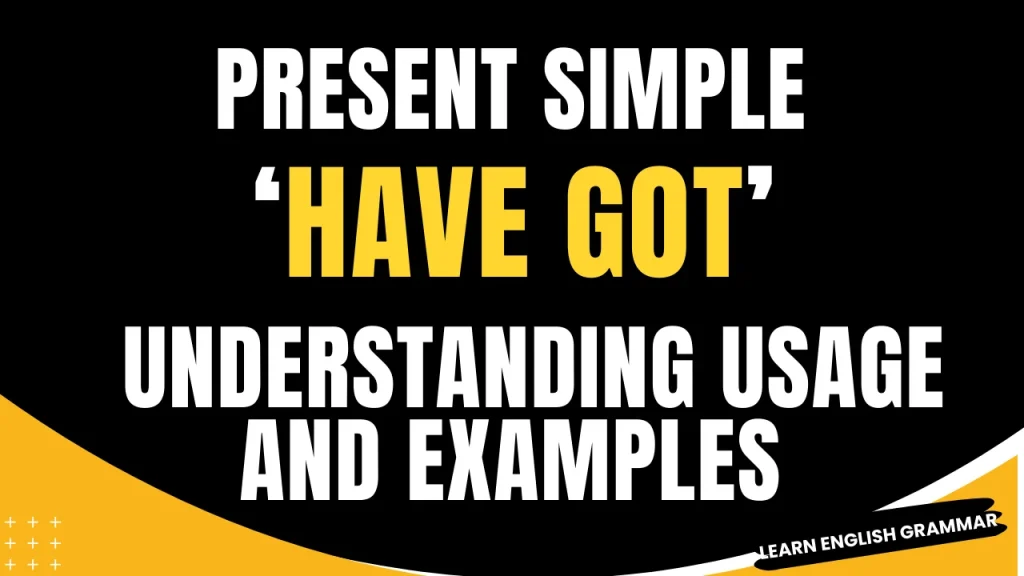
In English grammar, the present simple tense is a fundamental structure used to describe habitual actions, general truths, and permanent states. One of the variations of the present simple tense is the use of ‘have got.’ While it shares similarities with the verb ‘have,’ ‘have got’ has its distinct usage and serves as an alternative way to express possession, relationships, and characteristics. In this article, we will explore the intricacies of the present simple tense with ‘have got,’ examining its meaning, and usage, and providing examples to facilitate a comprehensive understanding.
Meaning and Usage:
1. Possession:
When used to indicate possession, ‘have got’ is equivalent to ‘have.’ However, ‘have got’ is more commonly used in spoken English, particularly British English. Consider the following examples:
- I have got a new car. (possessing a car)
- She has got three cats. (possessing three cats)
- They have got a spacious house. (possessing a spacious house)
Note: In American English, it is more common to use ‘have’ instead of ‘have got’ in these contexts. So, one can rewrite the sentences above as:
- I have a new car.
- She has three cats.
- They have a spacious house.
2. Relationships:
‘Have got’ can also be employed to express relationships, indicating familial connections or friendships. Here are a few examples:
- He has got a brother and a sister. (indicating siblings)
- We have got a close-knit group of friends. (expressing a close friendship)
- She has got a great bond with her grandparents. (describing a strong connection)
3. Characteristics:
When describing physical or personal characteristics, you can use ‘have got’ to convey attributes and qualities. Observe the following examples:
- He has got curly hair. (describing the texture of hair)
- They have got a strong work ethic. (highlighting a specific trait)
- She has got a great sense of humor. (depicting a personal quality)
Note: In these cases, ‘have’ is rarely used in place of ‘have got.’
Formation and Structure:
The structure of ‘have got’ in the present simple tense follows a pattern:
Affirmative sentences:
- Subject + have/has + got + object
- Examples: I have got a new phone. / She has got a lovely garden.
Negative sentences:
- Subject + have/has + not + got + object
- Examples: They have not got a car. / He has not got a pet.
Interrogative sentences:
- Have/Has + subject + got + object?
- Examples: Have you got any plans? / Has she got a laptop?
Note: In the negative and interrogative forms, ‘have’ is contracted with ‘not’ to form ‘haven’t’ or ‘hasn’t.’
Usage in Contractions:
‘Have got’ can be contracted in spoken English, resulting in shortened forms commonly used in informal settings. Here are some examples:
- I’ve got (I have got)
- You’ve got (You have got)
- He’s got (He has got)
- She’s got (She has got)
- They’ve got (They have got)
- We’ve got (We have got)
In summary, understanding the usage of the present simple tense with ‘have got’ allows for effective communication in various contexts.Whether expressing possession, relationships, or characteristics, ‘have got’ offers a versatile alternative to ‘have’ in spoken English, especially in British English. By mastering the formation and structure of ‘have got,’ along with its contractions, learners can enhance their language skills and communicate more naturally. Therefore, embrace ‘have got’ and experience the added flexibility it brings to your English conversations.